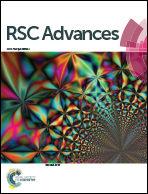Protein secondary structure prediction with context convolutional neural network
Abstract
Protein secondary structure (SS) prediction is important for studying protein structure and function. Both traditional machine learning methods and deep learning neural networks have been utilized and great progress has been achieved in approaching the theoretical limit. Convolutional and recurrent neural networks are two major types of deep learning architectures with comparable prediction accuracy but different training procedures to achieve optimal performance. We are interested in seeking a novel architectural style with competitive performance and in understanding the performance of different architectures with similar training procedures. We constructed a context convolutional neural network (Contextnet) and compared its performance with popular models (e.g. convolutional neural network, recurrent neural network, conditional neural fields…) under similar training procedures on a Jpred dataset. The Contextnet was proven to be highly competitive. Additionally, we retrained the network with the Cullpdb dataset and compared with Jpred, ReportX, Spider3 server and MUFold-SS method, the Contextnet was found to be more Q3 accurate on a CASP13 dataset. Training procedures were found to have significant impact on the accuracy of the Contextnet.



 Please wait while we load your content...
Please wait while we load your content...